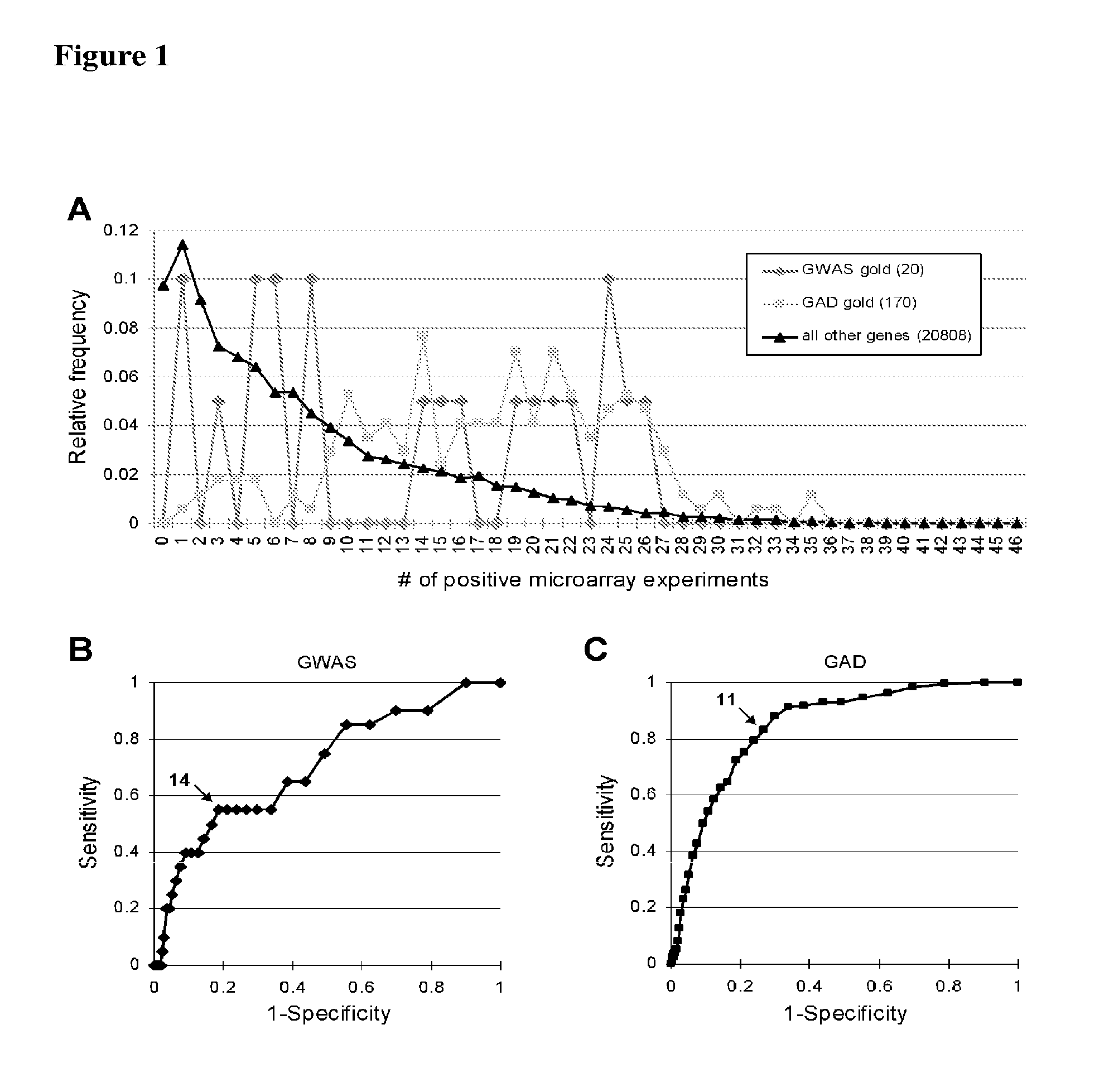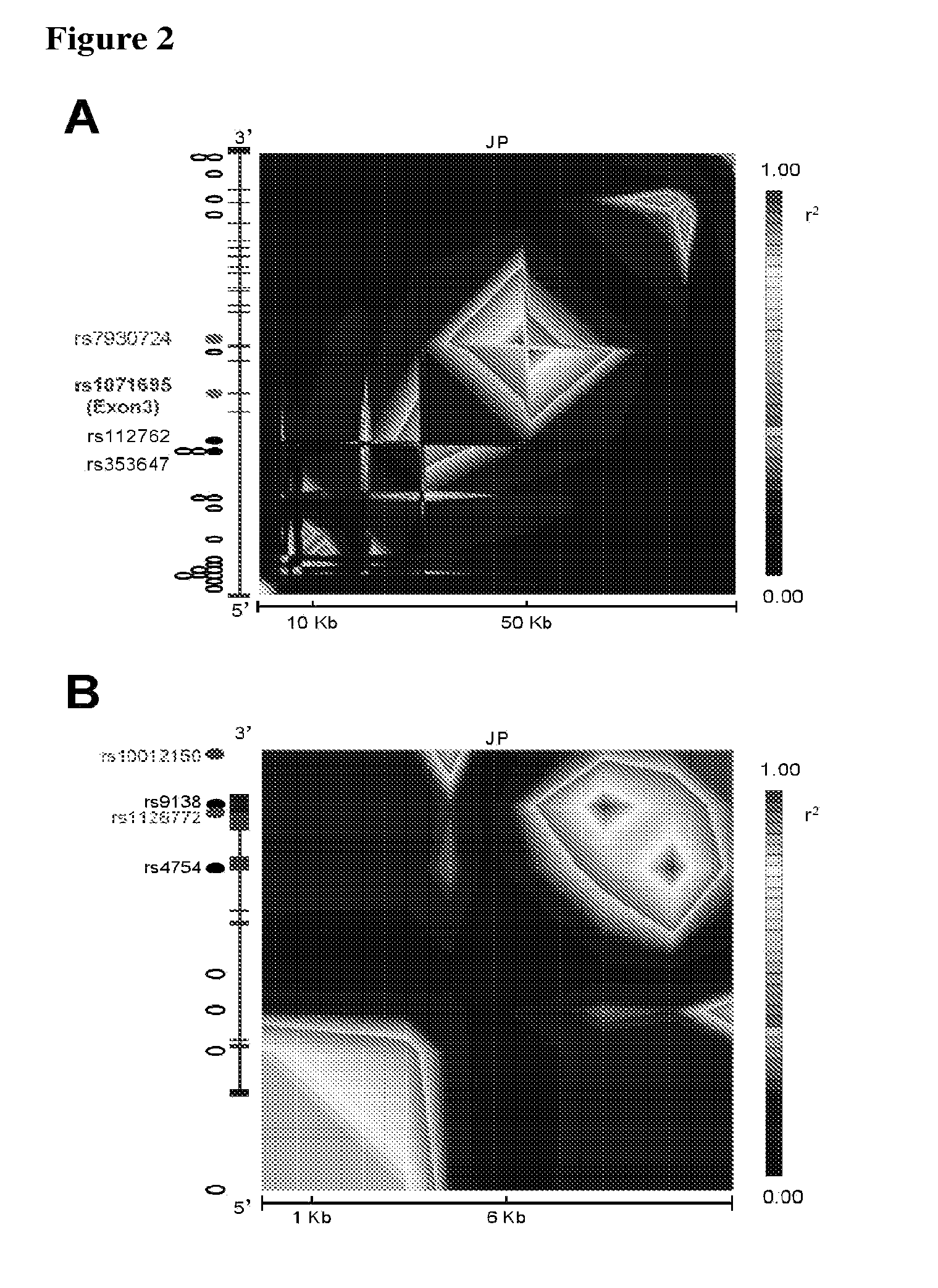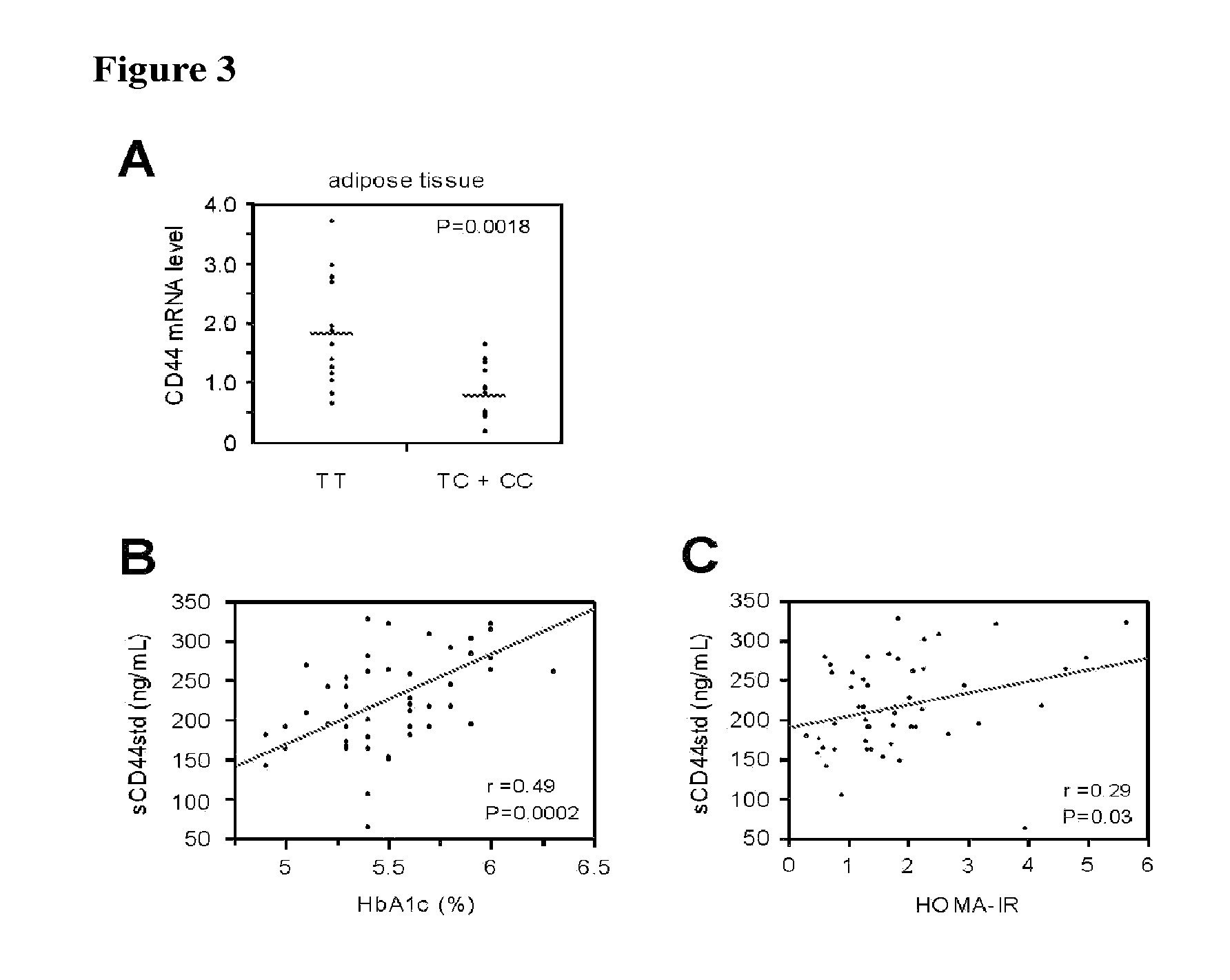Methods for Diagnosis and Treatment of Non-Insulin Dependent Diabetes Mellitus
a non-insulin dependent, diabetes mellitus technology, applied in the direction of cd44, nucleotide libraries, metabolic disorders, etc., can solve the problem that insulin resistant individuals pay a significant price in terms of general health
- Summary
- Abstract
- Description
- Claims
- Application Information
AI Technical Summary
Benefits of technology
Problems solved by technology
Method used
Image
Examples
example 1
[0140]Establishment of Type 2 Diabetes Mellitus (T2D) Genome-Wide Microarray Experiment Database.
[0141]A database of T2D genome-wide functional experiments was established by collecting and reanalyzing all T2D related microarray studies that were publicly available at the time of these studies (69 experiments, totaling 518 microarrays). The microarray experiments covered multiple types of tissues (muscle, liver, adipose and pancreatic islets) and species (human, mouse and rat). Each of the 20,994 genes in this database was counted and sorted based on the number of microarray experiments in which each gene was significantly dysregulated, from the set of 69 microarray studies.
[0142]All 69 publicly available data from genome-wide microarray experiments related to T2D were collected from three sources (Table 2). First, raw quantification data for microarrays were selected and downloaded from the Gene Expression Omnibus (GEO) using the keyword search: “diabetes” OR “diabetic” OR “NIDDM” ...
example 2
Integration of Publicly-Available Microarray Experiments Finds CD44 is Genetically and Functionally Implicated in Type 2 Diabetes
[0164]Type 2 diabetes (T2D) is a complex, polygenic disease, and phenotypically characterized by insulin resistance. Growing evidence has indicated the causative link between low-grade inflammation (macrophage infiltration) in adipose tissue and the development of insulin resistance / T2D. To find causative T2D-associated genes, we meta-analyzed 518 publicly-available T2D-related microarrays, based on our hypothesis that genes differentially expressed in T2D across models are strong candidates for functional variants. We extracted our top data-driven candidate, the immune-receptor CD44, and confirmed the strong association of a coding variant with T2D in 2,830 T2D-cases and 1,928 controls from two independent cohorts (rs1071695; OR=1.43[1.17-1.74], P=3.9×10−4). We also extracted OPN, encoding a ligand for CD44, and confirmed the significant association of th...
PUM
| Property | Measurement | Unit |
|---|---|---|
| Fraction | aaaaa | aaaaa |
| Fraction | aaaaa | aaaaa |
| Time | aaaaa | aaaaa |
Abstract
Description
Claims
Application Information
 Login to View More
Login to View More - R&D
- Intellectual Property
- Life Sciences
- Materials
- Tech Scout
- Unparalleled Data Quality
- Higher Quality Content
- 60% Fewer Hallucinations
Browse by: Latest US Patents, China's latest patents, Technical Efficacy Thesaurus, Application Domain, Technology Topic, Popular Technical Reports.
© 2025 PatSnap. All rights reserved.Legal|Privacy policy|Modern Slavery Act Transparency Statement|Sitemap|About US| Contact US: help@patsnap.com



